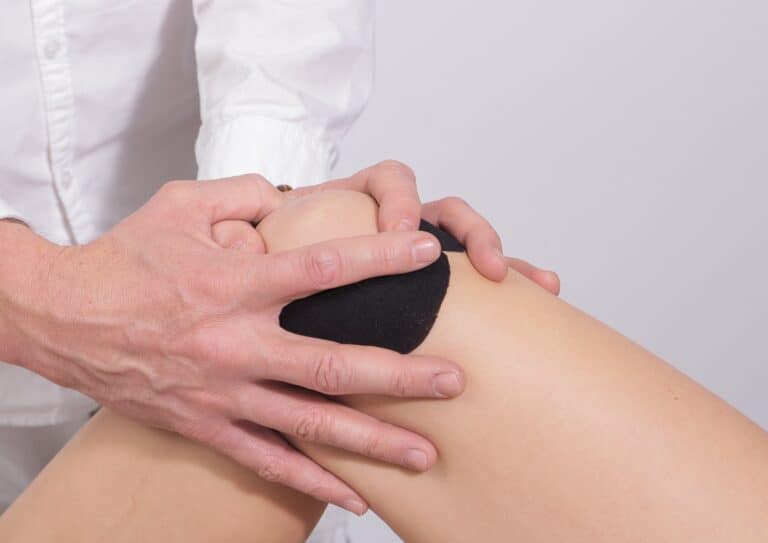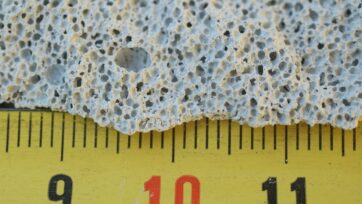In a major advancement that could revolutionize the treatment of joint diseases, engineers at Northwestern University have developed an innovative biomaterial capable of regrowing damaged cartilage in joints. This discovery has the potential to transform the lives of millions of people suffering from conditions like osteoarthritis, a degenerative joint disease that leads to the breakdown of cartilage and causes significant pain and mobility issues.
The engineering team, led by Professor Samuel I. Stupp, who holds positions in materials science, chemistry, and biomedical engineering at Northwestern, has created a biomaterial that closely mimics the properties of natural cartilage. Unlike existing treatments, which primarily focus on alleviating pain and managing symptoms, this new biomaterial aims to regenerate cartilage, addressing the root cause of joint deterioration.
The Biomaterial: A Closer Look
The biomaterial is composed of a peptide-based scaffold designed to encourage the body’s own cells to regrow cartilage tissue. This scaffold creates an environment conducive to healing, providing a structure that supports the growth of new, healthy cartilage. One of the remarkable aspects of this biomaterial is its ability to self-assemble into a matrix that resembles the extracellular matrix of cartilage, a critical component for maintaining the integrity and function of joints.
Early tests on animal models have shown promising results. The biomaterial not only supported the regrowth of cartilage but also led to a significant improvement in joint function. These findings suggest that the material could be highly effective in human applications, potentially offering a new treatment avenue for individuals who currently have limited options.
A Potential Game-Changer for Osteoarthritis Patients
Osteoarthritis affects millions of people worldwide, leading to pain, stiffness, and reduced mobility. Current treatments for the condition include pain management strategies, physical therapy, and in severe cases, joint replacement surgery. However, these approaches do not address the underlying problem of cartilage loss. By focusing on cartilage regeneration, the Northwestern team’s biomaterial offers hope for a more effective and less invasive treatment.
Joint replacement surgeries, while often successful, come with significant risks and a long recovery period. Moreover, artificial joints have a limited lifespan, often requiring additional surgeries in the future. The ability to regrow natural cartilage could reduce the need for these invasive procedures, offering a more sustainable solution for patients.
Moving Toward Clinical Application
While the results from animal models are encouraging, there is still a significant amount of research needed before the biomaterial can be used in clinical settings. The next steps include further testing to ensure the material’s safety and efficacy in humans. If successful, the biomaterial could be developed into a therapy that can be administered through minimally invasive procedures, further reducing the burden on patients.
The development of this biomaterial is the culmination of years of research in materials science and regenerative medicine. The interdisciplinary nature of the work, combining expertise from multiple fields, is a testament to the power of collaboration in driving innovation. Professor Stupp and his team are optimistic about the future of their research and are committed to bringing this technology to the clinical stage.
Implications Beyond Joint Repair
The implications of this research extend beyond the treatment of osteoarthritis. The principles behind the biomaterial could be applied to other areas of regenerative medicine, potentially leading to breakthroughs in the repair of other types of tissues, such as muscles, tendons, and even organs. The ability to regenerate damaged tissues holds promise for treating a wide range of conditions that currently have limited treatment options.
As the research progresses, there is hope that this biomaterial could lead to new therapies that not only improve the quality of life for patients but also reduce healthcare costs associated with chronic joint conditions. The ability to regrow cartilage and restore joint function could allow patients to maintain an active lifestyle, reducing the long-term impact of joint diseases on individuals and society.
The Northwestern team’s work is a prime example of how engineering and science can come together to solve complex medical problems. By leveraging advanced materials and understanding the body’s natural healing processes, the team has created a solution that could change the way joint diseases are treated in the future.
References
Morris, Amanda 2024, ‘New biomaterial regrows damaged cartilage in joints’, Northwestern, viewed 8th August 2024, <https://news.northwestern.edu/stories/2024/august/new-biomaterial-regrows-damaged-cartilage-in-joints/>

























